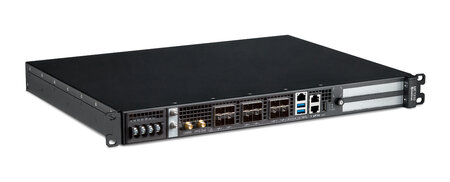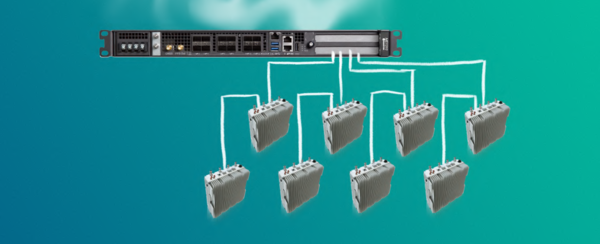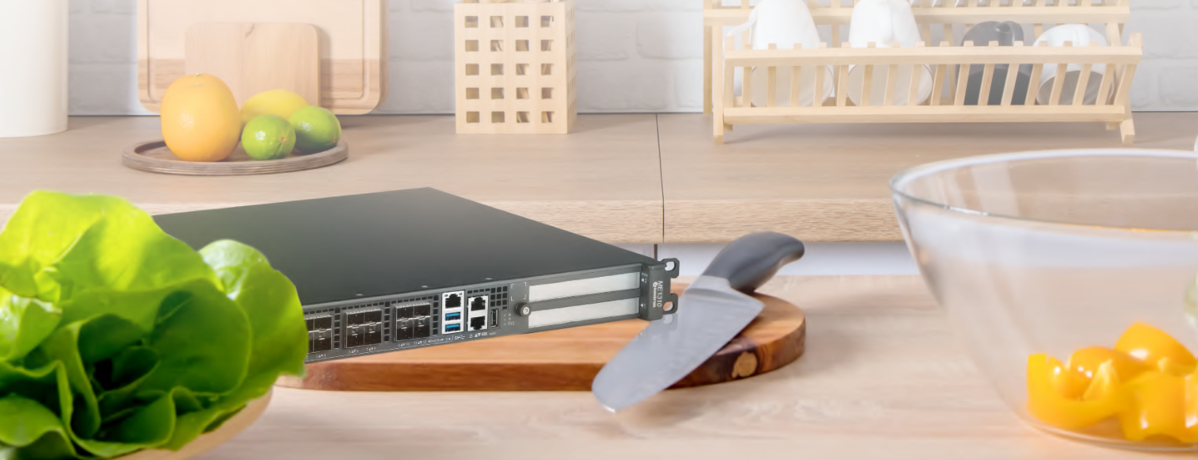Private LTE networks provide organizations with extended coverage and more secure, robust connections compared to public Wi-Fi. These networks offer operators increased reliability, flexibility, and resiliency. In sectors such as public safety, defense, and transportation, organizations have the autonomy to control access and dictate network performance.
eNodeB hardware plays a pivotal role in LTE network infrastructure, facilitating communication between mobile devices and the base station. It consists of both hardware and software components that companies like Kontron offer to telecommunications operators and businesses looking to deploy and maintain advanced wireless communication networks.
Kontron's baseband unit (BBU) serves as a crucial component of an eNodeB solution tailored for next-generation mission-critical networks. It is designed with the capability to respond to high peak workloads and help operators evolve smoothly to a 5G network.
The ideal eNodeB solution
The eNodeB ensures efficient wireless communication, high data rates, and seamless connectivity in LTE and 5G networks. Its components work together to manage the radio interface, process signals, and facilitate communication between user devices and the core network.
At the root of every efficient eNodeB solution is the right mix of ingredients to enable cellular services for end customers and provide full network coverage. Its architecture involves several elements such as the base station (or eNodeB itself), antennas, BBU, fronthaul interface, backhaul connection, network management and security.
Once the ingredients are blended, the ideal eNodeB provides coverage in the following areas:
- Linear or omnidirectional radio sites for outdoor cellular coverage
- Hot spots like public transportation stations
- Tunnel radio coverage
- Double radio coverage for redundancy purposes
LTE network deployments start with a solid foundation as the BBU
The ME1210 edge computing platform can be considered the “main dish” or BBU of an eNodeB recipe. It solves restricted space and power challenges by enabling applications close to the network Edge.

This BBU mixture is composed of the following key elements:
- x86-based edge server as the BBU
- Indoor cabinet installations with an IP20 rating (outdoor variants also available with IP67 rating)
- S1, X2, PTPV2, and OAM interfaces through a single 10 GbE IP interface
- Up to four CPRI ORI TDM (Rate 6 | Split 8) interfaces through PCI-E CPRI board for fronthaul connections
- Front access only for all interfaces
- Up to 8 RRH connections and support via optical CPRI link (Fronthaul interface) with star and daisy chain
- Dual feed DC power supply (non-redundant) Single AC PSU (non-redundant AC version also available)
- PTPV2 (IEEE 1588v2) G8275.1 synchronization through integrated 12x10GbE switch with holdover
- Support for mixed TDD/FDD configurations, all TDD modes, TDD mode 0 productized
9 quality ingredients in a single box
The combination of ingredients helps decrease network congestion and improve the performance of applications by getting task processing closer to the user. The ME1210 edge computing platform contains 9 quality ingredients in a single unit, saving operators more space and reducing CAPEX and OPEX.
- Processor: Intel Xeon D
- Memory: 64 GB (4x16GB DDR4) memory
- Storage capacity: 1x128 GB SSD M.2
- Networking: integrated switch
- Timing and Synchronization: SyncE & PTPV2 with Telecom profile performance
- Local diagnostic ports
- PCIe expansion: 2x PCIe slots with 16x Gen3 lanes and 75W per slot
- Independent management network support
- Environmental capabilities: extended operating temperature range (-40 to +65 °C)
Advantages of Kontron’s BBU
1. Flexibility
In order to provide versatile installation options, the BBU (ME1210 platform) and radio frequency (RF) are separated. The BBU is typically housed in cabinets, technical rooms, and co-located with applications, signaling and transmission equipment, while the RRH is installed outdoors.
Advanced flexibility enables LTE operators to connect up to 8 cells per BBU, whether in a co-located or distributed mode. The system boasts a high level of integration that can adapt to stringent environmental constraints, thereby significantly reducing floor space and equipment operating costs. Enhanced resilience is ensured through redundancy based on dual-layered radio architectures, guaranteeing service availability to end users even in the event of hardware failure.
The inclusion of features such as TDD mode 0 which maximizes Uplink throughput, helps meet the stringent requirements of numerous vertical markets. The solution has timing and synchronization in one, addresses 3GPP compliancy needs, and allows for the re-use of existing site equipment, such as shelters to facilitate eNodeB integration even further.
The extended lifecycle of the system is supported by x86 engineering and production capabilities. It is 5G-ready and scalable through a simple software upgrade.
2. Cost savings
The ease of transitioning to 5G can be done solely through software updates, eliminating the need for extensive hardware replacements. In fact, the architecture's customizable design providing operators with adaptability to diverse network requirements. This reduces site preparation efforts, installation times, and overall operational expenses (OPEX), streamlining the deployment process and contributing to substantial cost efficiencies long term.
Attaining the highest level of density
The RRH, which typically sits at the top of a cell tower and transmits/receives signals, can easily link to the ME1210. To increase density, the ME1210 offers 4 CPRI links that support both star and daisy chain configurations, to interconnect up to 8 RRHs to one BBU.

Software for that extra flavor
For the tastiest results, the eNodeB requires centralized software architecture. The BBU is built for seamless software integration that helps manage external interfaces and various RRH modules. The eNodeB is remotely upgradeable, encompassing not only application layers but also assorted BBU and RRH firmware.
Advanced Kontron BBU for the best results
The BBU acts as a hub for controlling RRU functionality and communicating to the core network, playing a critical role in the processing of baseband signals. Kontron provides the most advanced BBU as the main dish, for the best possible eNodeB solution. It offers LTE operators in public safety, transportation and defense quality ingredients and a solid foundation that combines flexibility, density and performance in a single box, to streamline and accelerate network deployments.
For a break down all of the ingredients that make up an ideal eNodeB solution for LTE deployments, and advantages of choosing Kontron’s BBU recipe, read our Edge cook book HERE, or contact us at [email protected]



{{comment.comment}}